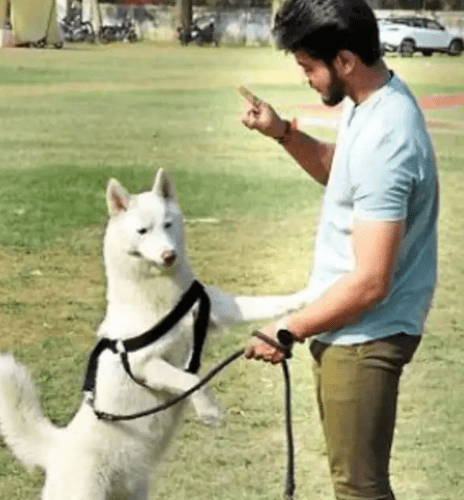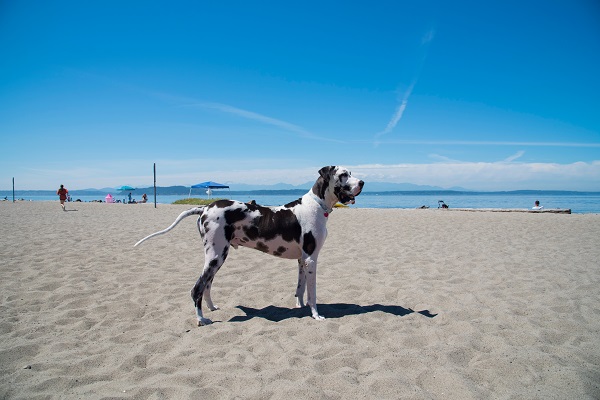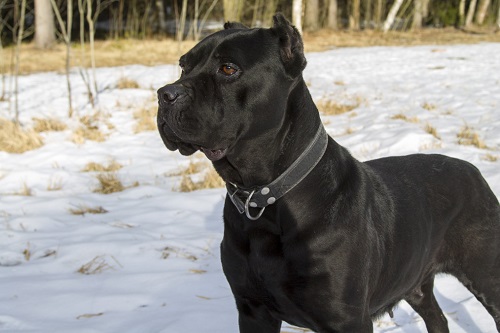If you have had your dog since they were a pup, you might mark their birthday on the calendar – at the least, you would remember the day they came to live with you for the rest of their lives. Did you know all shelter dogs have the same birthday? All of them celebrate their birthdays on August 1st.
If you got your baby a little late in their lives, not only would you not know when they were born, but you may also not know how old they are. There exist clear signs that experts like vets can use to obtain an estimation of the dog’s age.
When it comes to the life stages of your dog, this is the first one. Your dog will always be a child at heart, but the physical stages of infancy occupy a small part of their lives. Based on the breed that they belong to, this stage can be anywhere between 6 and 18 months.
There are different milestones and periods of puppyhood. For example, when they are born, pups are helpless and must stay near their mothers to regulate their body temperatures and feed.
Dog Life Cycle
Adolescence
The next stage in a dog’s life is adolescence. Based on the breed of the dog, this can be anywhere between 6 and 18 months of your dog’s age and could last anywhere between 18 and 24 months of age. This is when the reproductive hormones start to kick in.
Hence, your dog might start behaviors that make it challenging to be with them, like pushing your boundaries and marking your territory. It is a crucial period for training your dog, and most dogs who work in professions are not allowed to work till they pass this awkward phase.
Adulthood
Once their teenage gets over, dogs enter adulthood, the longest period of their lives. It could start anywhere between 18 and 36 months, depending on the breed – this is the time when dogs are at their strongest, healthiest, and energetic best.
Dogs tend to feel more relaxed at this stage of their lives and are better behaved, and it is much easier to control them. The most interesting thing is adult dogs have more energy than younger ones.
Seniority
When a dog is in the later stage of its life, they tend to slow down in many ways. They would have less energy and be less active because they would suffer from joint problems.
At this stage of their lives, it is significant to change their diet so they do not put on extra weight, as that can make it even harder to move around. In the larger dog breeds, seniority starts in the seventh year of their lives, and for the smaller breeds, this tends to happen during the tenth year.
How to Determine Dog Age?
If you do not know when your dog was born, how do you find out how old they are? How do you know the life stage that they are passing through? We have talked of a few measures over here that are not foolproof. It is the same, just as it happens with humans.
A dog could age prematurely because of their lifestyle. This is why you should try to assess their age when you bring them home. Do it six months later when they are stable health-wise in the new environment.
Teeth
Teeth are a good indication of the age of a dog. The development of teeth can accurately indicate how old a dog is, especially when they are around six months old. Teeth in puppies start to pop when they are three to six weeks of their age. Baby teeth enter and slowly fall out, and this is a period when the adult teeth grow.
Adults’ teeth erupt around twelve to sixteen weeks of their age. The progressive build-up of tartar can be tracked in a dog till they are around five years old.
When the dogs are middle-aged, they are still adult dogs. At that time, they are closer to old age than they are to the puppy stage.
Eyes
When you look at older dogs, eyes can be an excellent indication of how old they are. Between six and eight years of age, dogs tend to develop a condition referred to as “lenticular sclerosis.” The progress and presence of this condition would give you an approximate idea of how old a dog is.
In the initial stages, this particular condition looks like thin lines covering the lens of a dog’s eyes. Even as it progresses, a dog’s pupil starts taking on a gray, blue, or white tinge.
Coat
Just like human skin, the condition of the dog’s coat is one of the best ways to gauge its age. Puppies tend to have softer coats that have a different quality compared to older dogs. The quality of the coat may not be noticeable immediately.
It takes time, particularly when you get a dog whose coat has not been cared for properly or whose diet is bad. However, their coats should be softer again quickly if they are a pup. Older dogs develop gray streaks around their muzzles and at the top of their heads. It is a sign that they are seniors.
Behavior
A dog’s energy levels change all across their lives, and as such, they can be a great indication of how old they are. It works best with purebred dogs since they have predictable behavioral patterns. With mixed-breed dogs, knowing what is normal and what is not can be a bit tougher.
Still, if a dog is slow and takes longer to respond to commands, they are already in the later stages of their lives. If a dog is easily excitable and cannot contain their bladder when excited, it probably means they are adolescent.
Calculating the age of a dog in human years
It is good to know a dog’s age based on its teeth, behavior, and coat, to name a few. However, how do you calculate a dog’s age in human years and determine at which comparable stage of life your dog is in?
It is assumed that one dog year is equivalent to seven human years. This is a rough alignment of a dog’s and a human’s lifespan. But, it does not reflect the various life stages that a dog passes through.
AKC Dog Age Chart in Human Years

FAQs
What are the different life stages of a dog?
The different life stages of a dog are puppyhood, adolescence, adulthood, and senior years. Among all these, puppyhood is the shortest, and adulthood is the longest period of their lives.
Can you use teeth to determine the age of a dog?
Teeth are a good indication of a dog’s age since the development of teeth can provide an accurate assumption of a pup’s age till they are about six months old.
Can you use eyes to determine the age of a dog?
Eyes can be an excellent indicator of age among older dogs. Dogs tend to develop a condition known as lenticular sclerosis in their old age.
Can you use a coat to determine the age of a dog?
The coat is similar to human skin. Skin condition is one of the signs of aging among dogs. Puppies will have softer coats of a different quality compared to older dogs.
Can you use behavior to determine the age of a dog?
Yes, behavior can be an excellent way to judge the age of a purebred dog since they have predictable behavior patterns.
Conclusion
Dogs in their senior age tend to be less energetic. Probably that is one sign that you can also look out for. In case you do not know how old your dog is, there are always other methods you could use to estimate their age.
A vet must at least be able to tell you the life stages of a dog depending on the condition of their teeth, coat, eyes, and behavior, even if they cannot tell their exact age.
We have already detailed the different life stages of a dog, and in case you want to mark their birthdays, why not use August 1st, the universal birthday of dogs?
 DogExpress
DogExpress




















 in Chandigarh, India.
in Chandigarh, India. 

